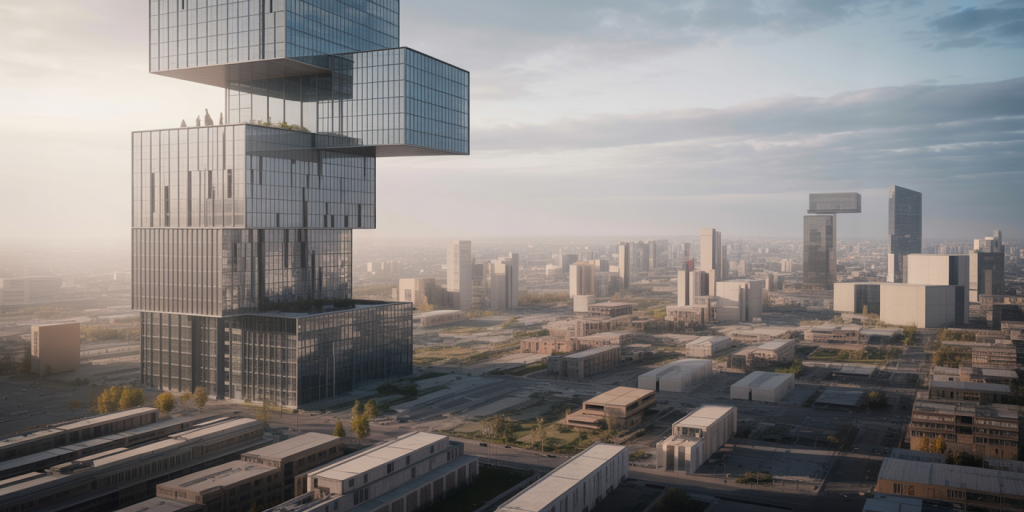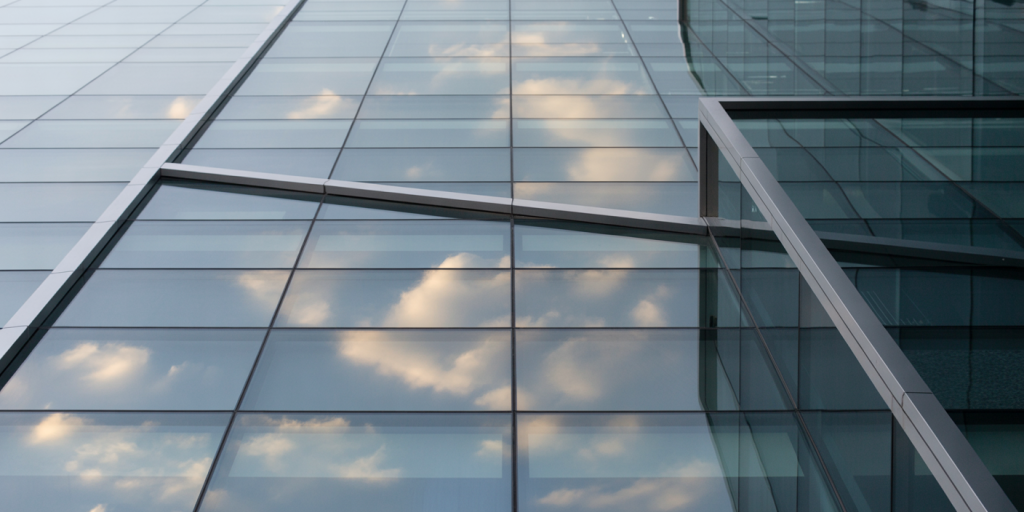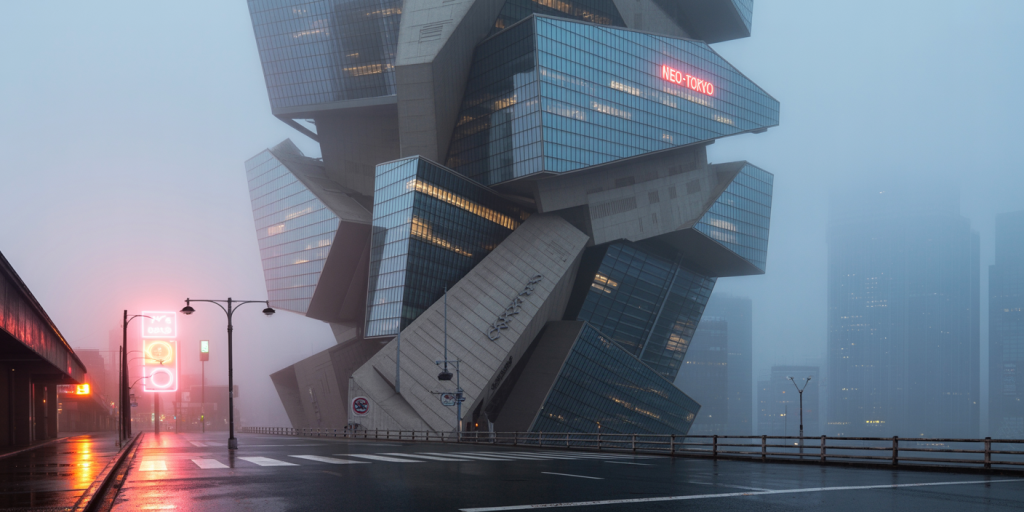Cities as Unwritten Poems in the Light of Rem Koolhaas
Some cities speak, others scream. Some wait quietly under concrete suns. And then there are cities that breathe — not with lungs, but with layers. Rem Koolhaas does not build monuments; he orchestrates fragments. He composes spaces like stanzas, structures like syntax. His cities are not finished thoughts, but poems suspended in breath — half-written, wholly alive.
In the light of Koolhaas, glass is not transparency, but memory. Steel is not coldness, but rhythm. And every void, every misalignment, every rupture between tower and shadow is intentional. These are not mistakes. They are the punctuations of a city still becoming. Koolhaas does not complete — he provokes. The urban body he imagines is not stable. It pulses, it contradicts, it questions itself in daylight.

Poetic Table of Contents
- Light Spilling Through Asymmetry
- The City as Collage of Intentions
- Steel That Remembers Rain
- Between Density and Drift
- Glass Walls and Private Echoes
- Gravity with a Pause Button
- Silence Held by Angles
- Corridors That Lead to Metaphors
- The Weight of the Unfinished
- Reflexes in Concrete Skin
- Textures of Disobedience
- Towers with Uncertain Hearts
- Geometry That Breathes Uncertainty
- Openings to Nowhere and Everywhere
- Elevators as Vertical Dreams
- Urban Voids as Breathing Rooms
- Syntax of Structures in Conflict
- When Skylines Begin to Speak
- Footnotes of the Future
Light Spilling Through Asymmetry
In Koolhaas’s cities, light does not fall — it negotiates. It spills unevenly, sliding between walls at improbable angles. This asymmetry is not disorder, but lyric. It allows shadow to become narrative.
Buildings are not boxes to contain light, but sieves that filter it, twist it, refract it until it feels like thought. The asymmetry becomes intimacy. Each shadow is a stanza.
The City as Collage of Intentions
For Koolhaas, the city is not a coherent essay — it is collage. Ideas pile upon each other like posters on a fading wall. Modernism brushes against brutalism, memory tangles with projection.
Each layer does not replace the last — it responds. The city is not about unity, but polyphony. And through this cacophony, something melodic emerges: purpose without predictability.
Steel That Remembers Rain
Even the most industrial material becomes lyrical in Koolhaas’s hands. His steel is not pristine — it holds the ghost of weather. It remembers being wet. It remembers wind.
This memory seeps into the architecture. Walls lean slightly, as if shaped by time. Metal is not machine here. It is organ. It shivers with the memory of storm.
Between Density and Drift
The urban core Koolhaas designs is dense — but never claustrophobic. He balances mass with movement. Even the most complex blocks allow drift. Even the thickest clusters offer escape.
Drift becomes a design principle. You can lose yourself — but always in relation to something. His spaces remember you, even when you forget yourself inside them.
Glass Walls and Private Echoes
Transparency in Koolhaas’s architecture is layered. Glass walls do not invite; they confront. They reflect you back. They record your passage. They let light in but don’t let secrets out.
There is always tension: between the seen and the withheld, the visible and the voyeuristic. Glass becomes not just boundary, but participant — it listens, it watches, it reflects.

The Shape of Interruptions
Koolhaas designs breaks — intentional interruptions in rhythm. A stairway that stops. A hallway that widens suddenly. A facade that ruptures. These are not errors. They are commas in concrete.
They slow you down. They make you ask why. They turn movement into meditation. In these interruptions, the building begins to speak — not in declarations, but in hesitation.
Gravity with a Pause Button
Koolhaas toys with gravity. His buildings defy weight not by denial, but by questioning it. A floor hovers. A ceiling curves. A beam floats without visible strain.
These are not tricks. They are invitations. He invites you to feel the presence of what holds you — and what you hold back from falling into.
Silence Held by Angles
There is a silence in Koolhaas’s work that architecture textbooks never teach. It comes not from emptiness, but from angle. From precision. From walls that lean just so.
This silence is not mute. It is contemplative. A moment held in a room. A breath between two beams. A pause before the city resumes.
Corridors That Lead to Metaphors
Hallways in his buildings are not mere connectors. They are metaphors. Transitions. Spaces of shift. A corridor turns and with it, so does your thought.
In these in-between places, the city becomes internal. You are no longer just walking — you are transforming. The architecture maps not just space, but psyche.
The Weight of the Unfinished
Koolhaas does not fear incompletion. Some walls feel paused, not done. Some spaces feel raw, like a sentence mid-word.
This unfinishedness is honesty. It reflects the city as it is: always becoming. He resists polish in favor of truth — the vulnerability of a structure still thinking about itself.
Reflexes in Concrete Skin
Concrete in Koolhaas’s design is alive. It flexes in slabs. It reacts. It carries memory like a scar carries pain. It is not sterile — it sweats, it breathes.
He pours it like emotion, not just material. Each surface becomes a face, each grain a fingerprint. The city does not just stand. It flinches, it recoils, it embraces.
Textures of Disobedience
You touch his buildings with your eyes before your hand. Their surfaces are not seductive — they are confrontational. A grid breaks. A line veers. A panel rebels.
This tactile tension creates meaning. It’s not about comfort. It’s about awareness. Koolhaas doesn’t design to please. He designs to awaken.
Towers with Uncertain Hearts
His skyscrapers are never mere verticality. They question ascent. They twist. They contradict. A high-rise becomes narrative — a story read upward.
And at their core is always something uncertain: a void, a question, a misalignment. The tower is not a triumph — it’s a telescope into contradiction.
Geometry That Breathes Uncertainty
Shapes in Koolhaas’s world don’t solve. They provoke. A triangle slouches. A cube fractures. Circles blur into ellipses.
Geometry here is not math, but mood. He lets uncertainty into form. And in that welcome, architecture finds its poetry.
Openings to Nowhere and Everywhere
Doors lead into walls. Windows peer into courtyards with no end. Passages become loops. Koolhaas plays with entry and exit like metaphors.
You are never sure where you’ll arrive. And that, precisely, is the point. The journey is not to get somewhere. It’s to realize how arrival changes depending on where you began.
Elevators as Vertical Dreams
Even his elevators dream. They rise like thoughts. They pause like doubt. Their shafts become arteries — pulsing, hidden, necessary.
Inside, the movement becomes intimate. A journey not across distance, but through layers of a building’s subconscious. The vertical here is not height. It is depth.
Urban Voids as Breathing Rooms
Most cities fear empty space. Koolhaas embraces it. He leaves voids — plazas, terraces, rooftops — not as filler, but as lungs.
These spaces breathe. They exhale relief. They offer contrast to density. In these voids, the city exhales. And so do we.
Syntax of Structures in Conflict
Buildings on his street corners don’t always agree. One is bright, the other brutal. One leans, the other scolds. But Koolhaas lets them argue.
This is urban syntax. Conflict creates meaning. Contrast builds character. The street becomes sentence — and we are punctuation, passing through.

When Skylines Begin to Speak
His skylines do not impress from a distance. They beckon. They hint. They rise with irregularity, like phrases spoken with accent.
From afar, they suggest a whisper. Up close, they speak many languages. Koolhaas does not design icons. He designs dialects.
Footnotes of the Future
Every element in his design — even the overlooked stairwell, the half-hidden bench — feels like a footnote to something larger.
These are not afterthoughts. They are clues. Koolhaas embeds the future not in height, but in detail. In what you almost miss.
FAQ – Questions and Answers
Who is Rem Koolhaas?
Rem Koolhaas is a Dutch architect, theorist, and urbanist known for his bold, experimental, and philosophical approach to architecture. Founder of OMA (Office for Metropolitan Architecture), he challenges traditional forms and urban logic.
What is unique about Koolhaas’s style?
His work blends multiple influences — sociology, politics, memory, fragmentation — into spaces that defy symmetry, conventional function, and aesthetic predictability. He embraces contradiction and complexity.
Does Koolhaas focus on form or function?
Both, and neither. He deconstructs the binary. For Koolhaas, function becomes metaphor, and form becomes critique. Architecture is not solution — it is dialogue.
Why are some of his buildings considered “unfinished” or raw?
He intentionally resists polish to highlight process, temporality, and honesty. The rawness reflects the real state of cities: always in flux, never complete.
What are the emotional impacts of his architecture?
His buildings evoke awe, tension, curiosity, and sometimes disorientation. But always engagement. Koolhaas’s architecture insists that you think, feel, and question.
Final Reflections – A City That Writes Itself
Rem Koolhaas does not offer answers. He offers architecture as possibility. As page. As unfinished poem. His cities are not blueprints of certainty, but landscapes of suggestion. They write themselves — with each footstep, each reflection, each light that falls across concrete at 5:37 p.m.
To walk through his city is to walk inside thought. To inhabit form not as container, but as language. Koolhaas does not seek beauty. He seeks truth — and its echo, shaped in glass, sharpened in shadow, softened in void. And in that echo, the city becomes not just a place — but a poem that knows it will never end.
